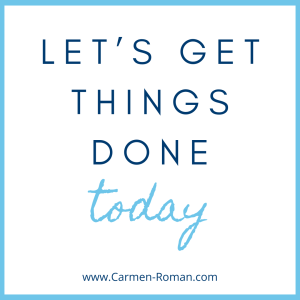Do you ever wonder how to get a lot done while still having time to relax and enjoy life? If you’re a fan of lists, the secret is to use a balanced mix of different to-do lists. There are three major types of lists that can help you stay organized, avoid distractions, and find joy in your daily activities. Let’s see how these different list types can make your life easier.
To-Do Lists: The Classic Organizer
To-do lists are the most common type of list. They are simple and easy to create, sort, and rank. You just list everything you need to do on a piece of paper or using an electronic device. To-do lists give you an overview of all the tasks you need to complete, so they keep you:
- organized: all your tasks are in one place.
- focused: you can sort tasks by importance or deadline.
- accountable: writing down tasks makes you more likely to complete them.
Here’s an example of how a to-do list might look like on a busy day:
- Finish the project report for work.
- Pick up dry cleaning.
- Buy groceries for dinner.
- Call the plumber to fix the sink.
- Go for a jog in the evening.
With a to-do list, you know exactly what needs to get done. Checking off each task as you complete it, gives you a sense of accomplishment.
Still, by using only a to-do list, you risk to become:
- overloaded: Trying to cram too many tasks into one list can be overwhelming.
- inflexible: A rigid list can make it hard to adapt to changes in your day.
- too switched on: Focusing only on completing tasks can make you forget to rest and recharge.
I’m not a big fan of to-do lists. But if you are, they can serve you best if you combine them with not-to-do lists and get-to-do lists.
Not-To-Do Lists: The Distraction Buster
Not-to-do lists are the opposite of to-do lists. Instead of tasks to complete, you list behaviors and activities to avoid. The not-to-do lists can support you to:
- Manage distractions: Helps you avoid common distractions that waste time.
- Manage time: Prevents you from spending time on unimportant activities.
- Focus: Keeps you concentrated on what’s truly important.
Here’s an example:
If you want to stay productive, your not-to-do list might include:
- Don’t check social media during work hours.
- Don’t watch TV before completing daily tasks.
- Don’t skip meals.
Use not-to-do lists to remove distractions and maintain a productive flow throughout your day. Remember though that constantly focusing on what not to do can feel restrictive. And a strict not-to-do list can be as limiting as a strict to-do list.
The third type of to-do lists is the magic one:
Get-To-Do Lists: The Joy Finder
They put a positive spin on your daily tasks by framing them as opportunities rather than chores. This approach can boost your motivation and make your day more enjoyable. The get to-do lists encourage a more upbeat and enthusiastic attitude. They make you more excited to complete tasks.
Imagine planning your weekend with a get-to-do list. It might look like this:
- Get to try out a new recipe for dinner.
- Get to take a walk in the park.
- Get to watch a new movie.
- Get to meet a friend for coffee.
Framing tasks this way helps you look forward to them and approach your day with a positive outlook. Only be mindful that focusing too much on enjoyable tasks could lead to neglecting important ones.
Combining the Lists: A Recipe for Success
Using all three types of lists together can maximize their benefits while minimizing their pitfalls. Here’s how to integrate them effectively:
Morning Routine:
Start your day by reviewing your to-do list. Identify the most critical tasks and focus on those first. Keep your not-to-do list handy to remind yourself of distractions to avoid. Sprinkle in tasks from your get-to-do list to keep your motivation high.
Here’s an example for a Saturday:
To-Do List:
- Finish a freelance project.
- Clean the house.
- Grocery shopping.
Not-To-Do List:
- Don’t spend more than 15 minutes on social media in the morning.
- Don’t skip breakfast.
- Don’t procrastinate on the freelance project.
Get-To-Do List:
- Get to meet a friend for lunch.
- Get to relax with a good book in the afternoon.
- Get to try a new recipe for dinner.
By combining these lists, you can stay focused, avoid distractions, and find joy in your tasks.
Midday Check-In:
Take a short break to review your progress. Adjust your lists as needed. If a to-do task takes longer to complete than expected, refer to your not-to-do list to avoid getting sidetracked. Use your get-to-do list as a reward for completing tasks.
Evening Wind-Down:
At the end of the day, review what you’ve accomplished. Celebrate the tasks you’ve checked off your to-do list. Appreciate the distractions you’ve avoided thanks to your not-to-do list. Enjoy the activities from your get-to-do list. Reflect on what worked well and what you could improve for the next day.
Bonus ideas:
- use only not-to-do lists to boost your focus ahead of an important deadline
- use only get-to-do lists if you feel anxious, agitated or you simply need a mood boost.
Conclusion:
To-do lists, not-to-do lists, and get-to-do lists are powerful tools that can help you stay organized, focused, and motivated. Each type of list serves a unique purpose, but when used together, they can transform your daily routine and help you achieve a balanced, productive, and enjoyable life. Start incorporating these lists into your day, and see how they can help you master your tasks and find joy in the process.

